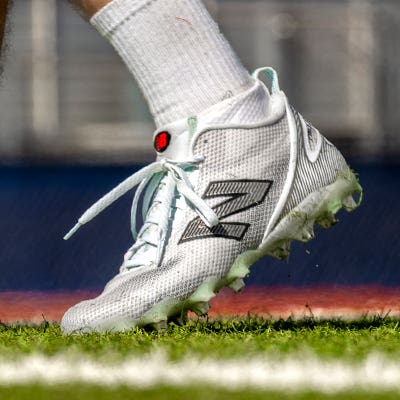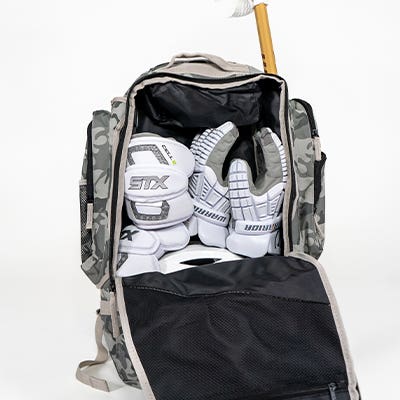So, some gavone on the other team has checked one of your players on the head, or thrown an absolute hack of a slash and now your team is awarded a man-up. Man-up plays are a huge advantage, and capitalizing on a high percentage of these opportunities will convert to wins. Let’s look into one of the simplest and most effective ways to implement a man-up offense.
The 3-3 wheel is the most common man-up play out there, but it is still extremely effective. This play can be utilized at an amateur level, and is even used by elite D-1 schools and even professional teams. You are either moving towards the ball, or away depending on where you are in the set. Basically, you want to set up as if you are in a 3-3 offense, with your deepest players only going as far as goal-line extended. The motion of the offense operates as a simple wheel, where players rotate to replace each other and move through the zones of the man-down defense.
A walkthrough example would look something like this: play starts and your offense spins the ball a few times around the complete offense so that everyone gets a touch or two. Once you are ready to start to run the wheel, you want to get the ball to one of the GLE attackmen; in our diagram this player represented by A1 (also A3, but we will show the motion through A1). Once A1 gets the ball, they will push upwards towards M1, causing A2 and A3 to cut across the middle zones towards A1’s previous position. Meanwhile, M1 and M2 will bump across, while M3 bumps down to GLE where A3 was.
The goal as the players rotate through the zone is to move the defense out of position and find the open look. As A1 rotates up, they will have A3 as a crease look, M3 as a through look for a backside dunk, or A2 for a nearside lay-up. Generally you want to try to avoid outside step-down shots during a man-up since you have that extra player and theoretically should find an open, high-percentage look, but A1 and M2 are also step down shots if worst comes to worst. M1 is also a safety blanket to just get the ball spinning again.
The beauty of the wheel is that if you don’t get it on the first time, you can go again. If you move the ball quickly, with a change of pace, constant rotation and misdirection, you will quickly tire out the defense in order to gain another advantage in addition to already being a man-up. There are also a lot of variations, with offset 4 man rotations, and 2-2-2 stacks that work great with the wheel on man-up, but it is best to get comfortable with the more simple 3-3 wheel before implementing something a little more advanced.
Here is a great video of college teams running their 3-3 wheel going from different positions in the set. Take note of the constant movement and fast-paced ball rotation.












